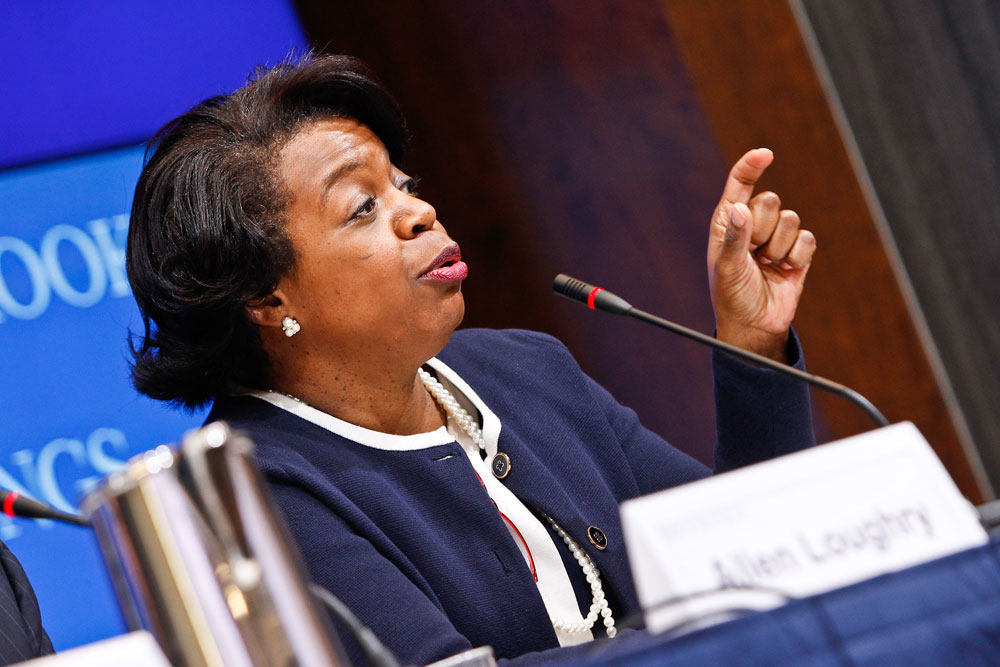
June 2, 2020; Tribune News Service
Nineteen years ago, in 1991, a study was released by the 17-member New York State Judicial Commission on Minorities. The report’s panel comprised judges, law professors, lawyers, a Surrogate’s Court clerk, and an official from the State Education Department. It made dozens of recommendations, including cross-cultural sensitivity training for judges and other court workers. Chief Judge Sol Wachtler of the New York Court of Appeals praised the report, while it was criticized by some of its own panel members and members of the union that represented court employees.
The crux of the report was that whites often fare better than blacks or people of color in the same circumstances—particularly as plaintiffs in civil cases.
“It is not pleasant to talk about the need for a court system that is treating everyone equally and the conclusion that our current system is not,” said Cyrus R. Vance, then a commission member and former US Secretary of State (and also the father of Cyrus Vance, Jr, the current attorney general of New York). “That’s a terrible condemnation of our society.”
Fast forward to today. We have protests in every state and countries worldwide, calling for justice for Black peoples and other people of color. That justice will be meted out by court systems that, in many cases, are not known for being truly just. Some who sit in judgment in those court systems are reacting and responding to the voices of protest. Some are speaking out themselves, and some remain silent or let their actions from the bench speak for them.
One state supreme court justice who did not remain silent is North Carolina Supreme Court Chief Justice Cheri Beasley, who is African American. Beasley says racism and prejudice “stubbornly persist” in North Carolina, and that Black people receive unequal treatment from the judicial system.
This statement, at times tearful, was given from the bench in Raleigh, calling for the state to listen to protesters as they denounce police violence and to understand the depth of their frustration.
“These protests highlight the despair and injustice that continue to plague black communities,” she says. “Racism and prejudice have remain stubbornly fixed and resistant to change.”
Sign up for our free newsletters
Subscribe to NPQ's newsletters to have our top stories delivered directly to your inbox.
By signing up, you agree to our privacy policy and terms of use, and to receive messages from NPQ and our partners.
Beasley points to bail reform as showing promising results in balancing some of the inequality in the state. She also looks toward an alliance between lawyers, judges, community service workers, and clergy as a positive step.
“We must do better,” she says. “We must be better. Too many people believe that there are two kinds of justice….In our courts, African Americans are more harshly treated, more severely punished and more likely to be presumed guilty.”
In Washington, the entire State Supreme Court issued a powerful letter to members of the judiciary and legal community. In it, they state their own complicity in the injustice that began long before the founding of this country and remains today:
The legal community must recognize that we all bear responsibility for this on-going injustice, and that we are capable of taking steps to address it, if only we have the courage and the will. The injustice still plaguing our country has its roots in the individual and collective actions of many, and it cannot be addressed without the individual and collective actions of us all. As judges, we must recognize the role we have played in devaluing black lives. This very court once held that a cemetery could lawfully deny grieving black parents the right to bury their infant. We cannot undo this wrong—but we can recognize our ability to do better in the future. We can develop a greater awareness of our own conscious and unconscious biases in order to make just decisions in individual cases, and we can administer justice and support court rules in a way that brings greater racial justice to our system as a whole.
The letter also calls upon the legal community of lawyers and others to reexamine their own prejudices and how bound they are by what has “always” been. It charges the entire legal community as individuals to take individual responsibility for racism and its impact and to work together to eradicate it.
The letter concludes with the statement: “We go by the title of ‘Justice’ and we reaffirm our deepest level of commitment to achieving justice by ending racism. We urge you to join us in these efforts. This is our moral imperative.”
As these kinds of stirring statements come from judiciaries and jurists, we still see courts across the country making decisions that show clear bias and prejudice. We see candidates who are nominated for lifetime appointments to seats on the federal judiciary who will not affirm that Brown v. Board of Education (the 1954 Supreme Court decision that unanimously overturned the “separate but equal” decision) was rightly decided. And almost all of these nominees are now federal judges. We have protesters calling for justice, and we have some justices saying, “We hear you.” But perhaps we have not yet reached the ears of enough to make a real difference.—Carole Levine













